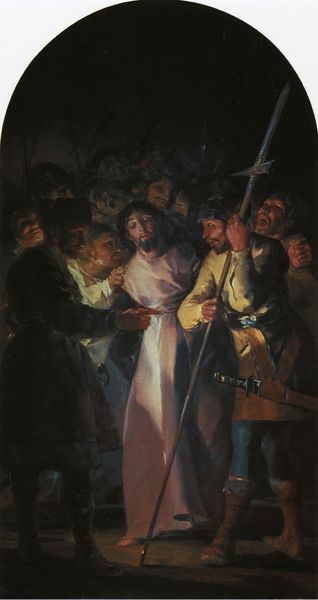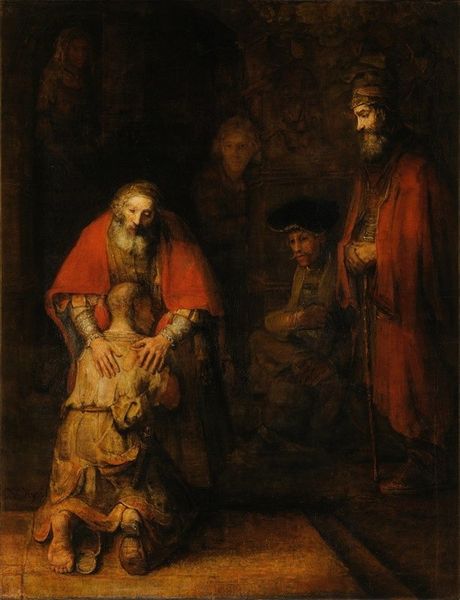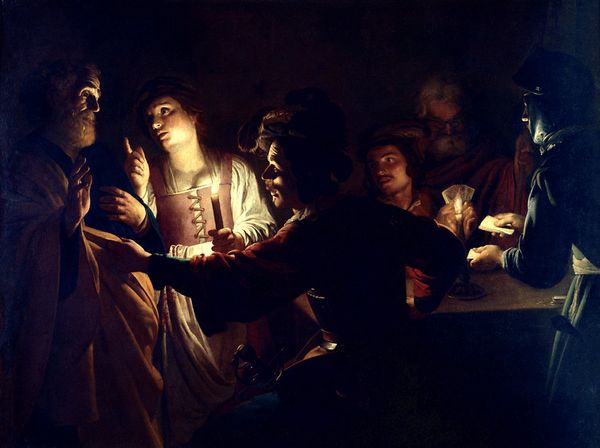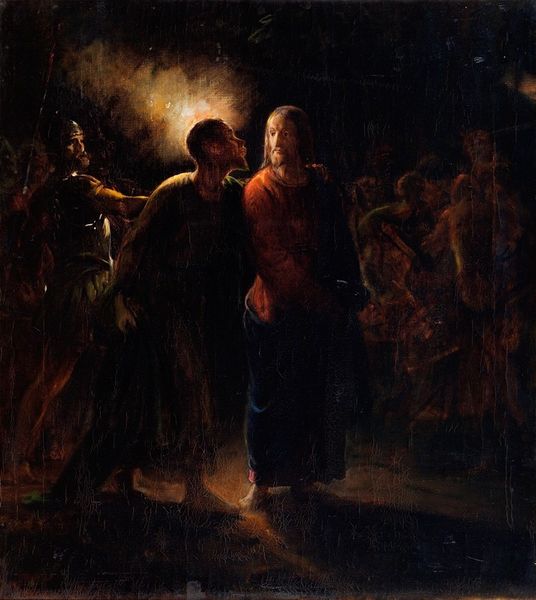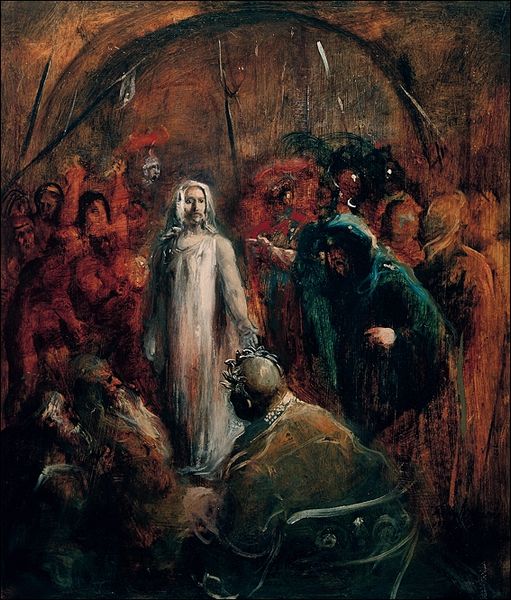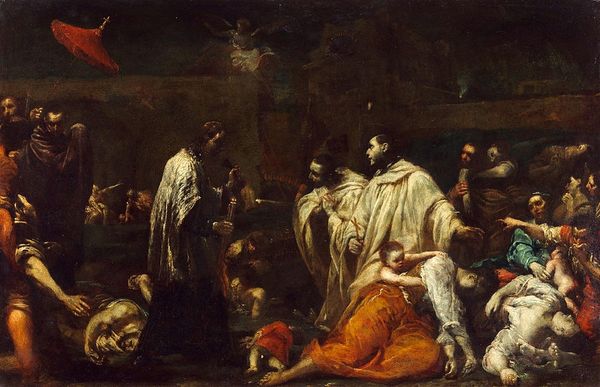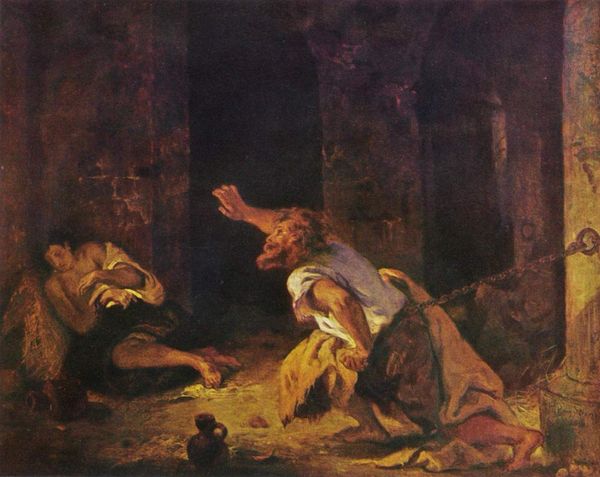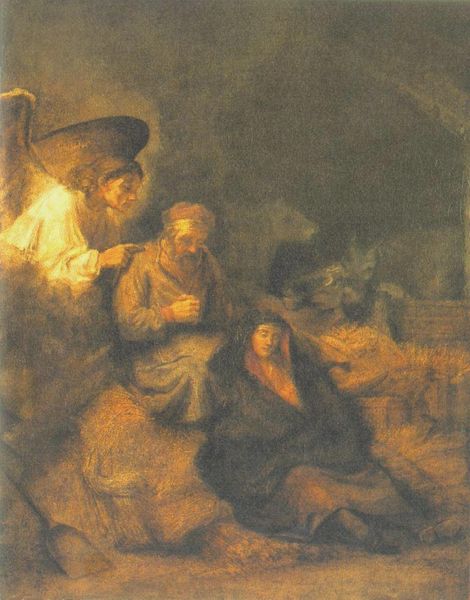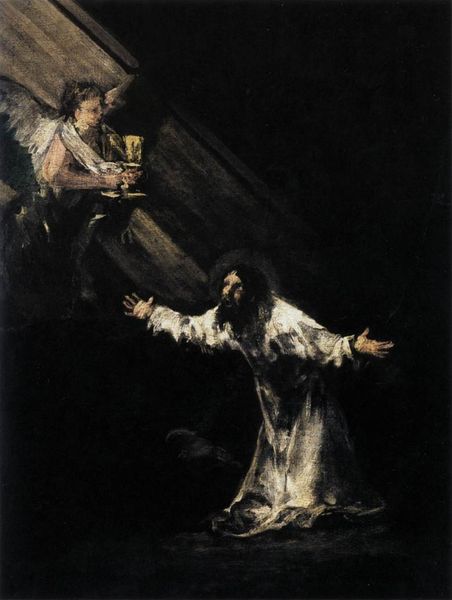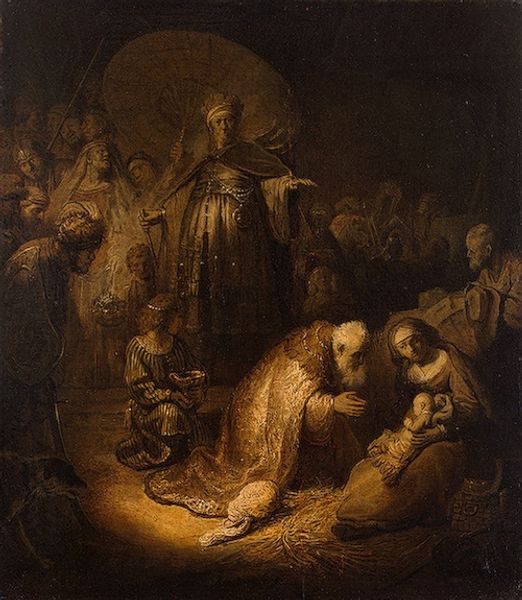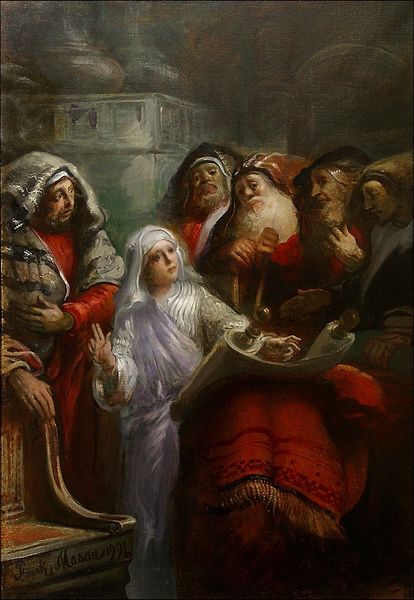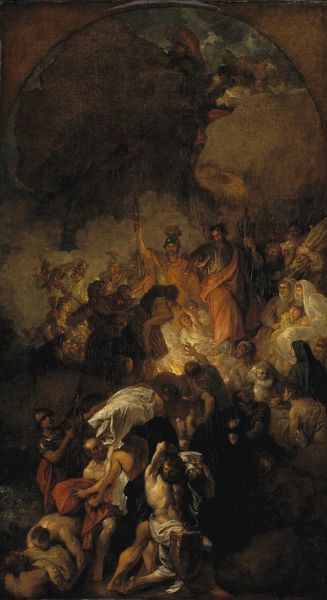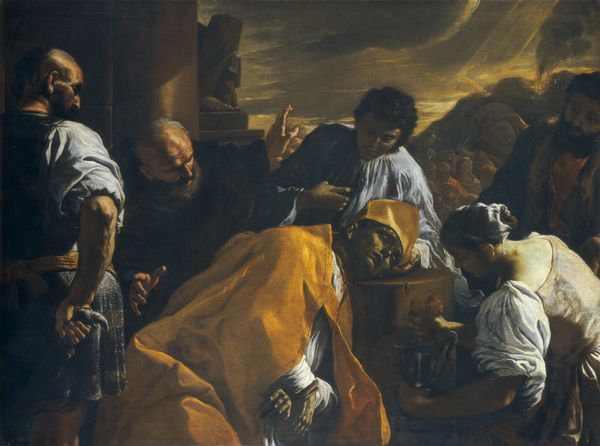
oil-paint
portrait
baroque
oil-paint
charcoal drawing
figuration
oil painting
history-painting
Copyright: Public Domain: Artvee
'The Denial of St Peter' was painted by Rembrandt van Rijn. The drama unfolds through a stark contrast of light and shadow, a technique Rembrandt mastered. Notice how the central figures are illuminated, drawing our eyes immediately to the pivotal moment of Peter's denial. The texture of the paint, thick and palpable, adds depth and a tactile quality to the scene, heightening the emotional intensity. This use of light is not merely decorative, it is structural. It divides the composition, casting doubt and moral questioning onto the narrative. Here, the painting's formal elements are not simply illustrative but deeply intertwined with its thematic content. Consider the interplay between the illuminated figures and the obscured faces in the background. This formal arrangement invites us to contemplate the blurred lines between truth and deception, faith and doubt. The use of light and shadow serves not just to depict a scene but to provoke a deeper engagement with its moral and psychological complexities.
Comments
While Christ is being questioned by the high priests in the dead of night, Peter waits outside. A maidservant recognizes him as one of Christ’s disciples, but Peter is afraid and denies it three times. In the right background, Christ is being led away, looking back over his shoulder at Peter who has betrayed him.
Join the conversation
Join millions of artists and users on Artera today and experience the ultimate creative platform.
